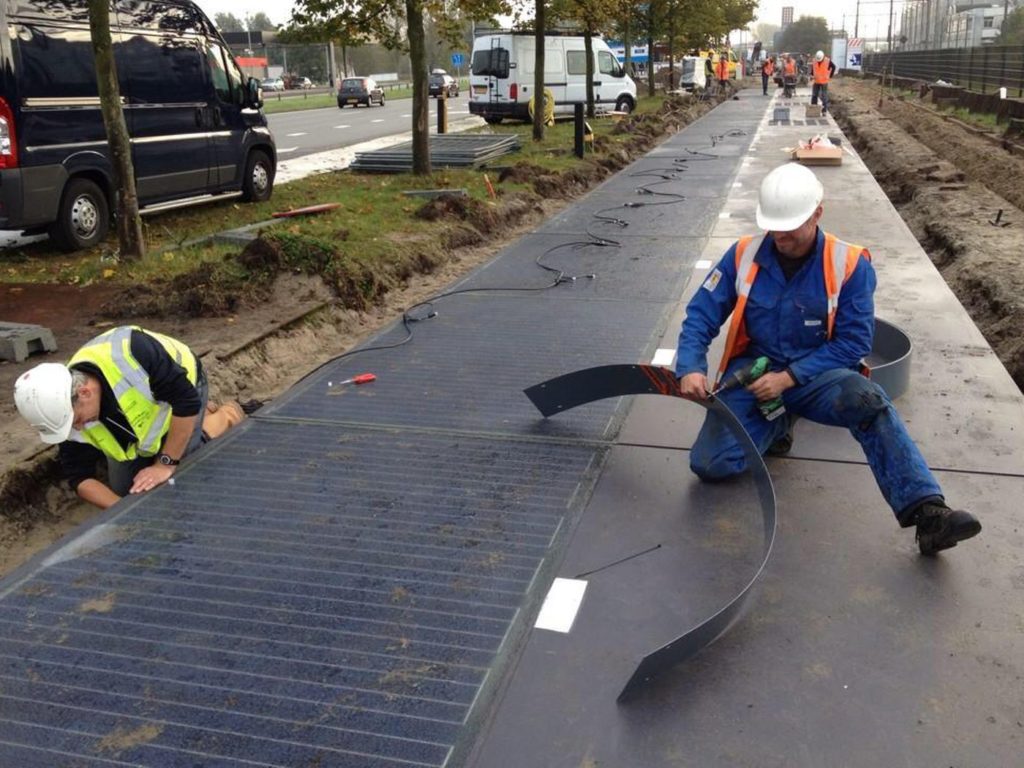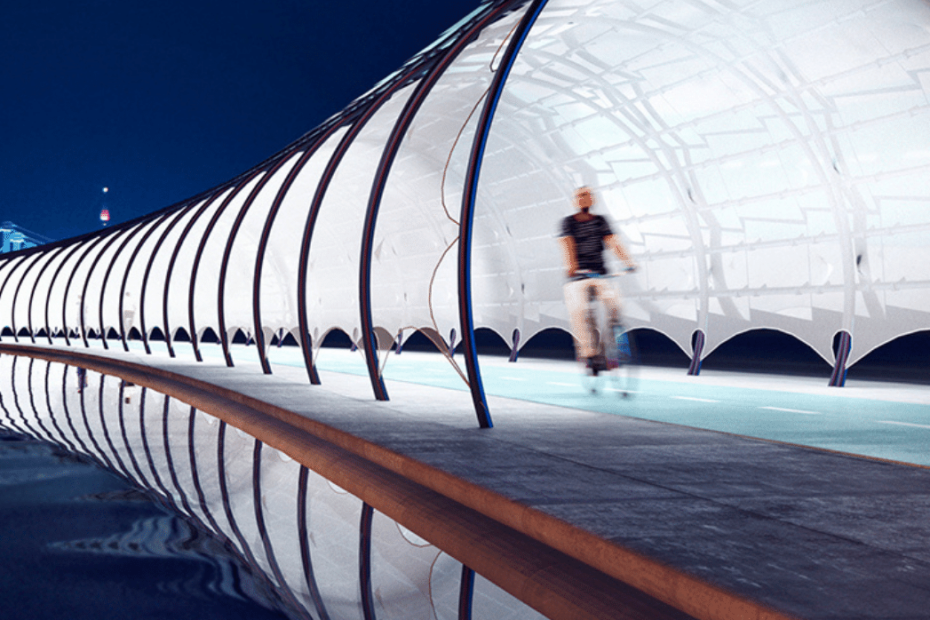Energy and Shade in DAY time, light in the NIGHT! Cycling just one kilometre of the route has the potential to power 750 homes.
A modular, semi-enclosed bicycle path provides riders with shelter, light at night and en-route charging stations.
2,000 MWh per Kilometer
Designed by German architect Peter Kuczia, the Solar Veloroute uses a thin canopy to protect cyclists from Sun, Wind and Rain. Curved steel arches support the array of photovoltaic panels that, according to Kuczia, could generate up to 2,000 MWh of electricity per kilometre of the bike path.
Specifically created for flexibility in use, the Solar Veloroute’s components can be made to fit almost any location. Everything from the length and route of the path to the number of panels atop the canopy and the density of the distribution of the arches is adjustable to best suit the local community’s needs.
After gathering solar energy during the day, the panel system lights up at night, providing a well-lit route for pedestrians and cyclists. The system also powers charging stations at multiple locations along the route.
Will Work Better in Tropics!
With a single kilometre of the pathway capable of generating enough electricity to run 750 homes, there is significant potential for routes of varying lengths to provide enough surplus energy to sell back to the grid or other individuals and organisations.
Currently, the design is in use in Switzerland and Dubai. As more and more cities work to make their transport options more environmentally friendly, routes such as this could become a fairly common sight.
Not the Only!
Since 2015 several countries started developing Solar roof covered Cycling Highways. Reportedly Korea built the first and may follow in various forms.
Other large built spaces in the transport industry also are turning to solar energy, to help reduce their carbon footprint. An airport in India now produces more energy than it consumes, thanks to the array of solar panels floating on a golf course lake. In Dubai, a parking garage that supports a number of government facilities is a zero-energy building.
Whilst some makes energy from the shelter, some do make the same with the floor. Here’s what the Dutch do.

Needless to say, Sri Lanka in the tropics need our heads covered!
Credit to Keely Khoury for some content, published on www.springwise.com.
